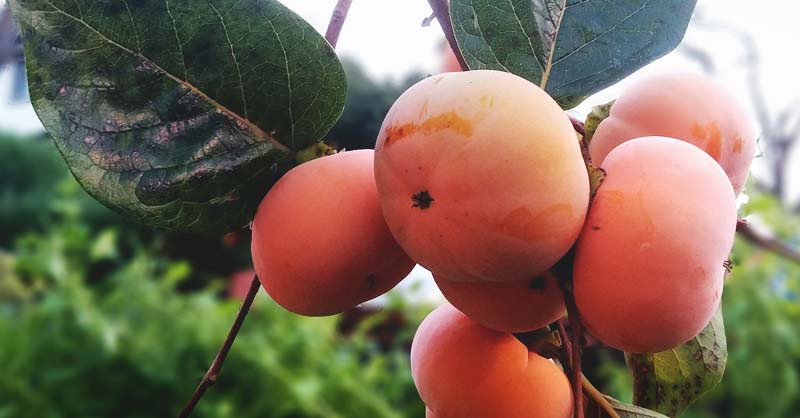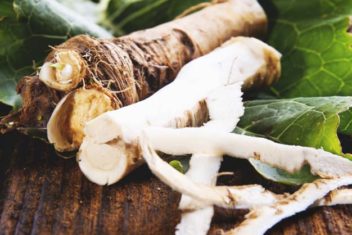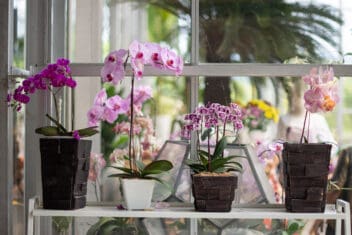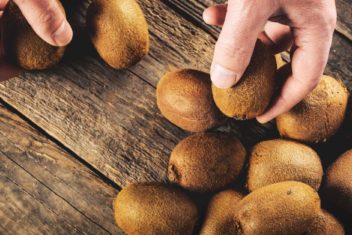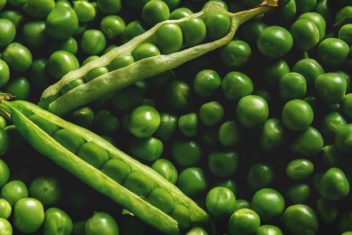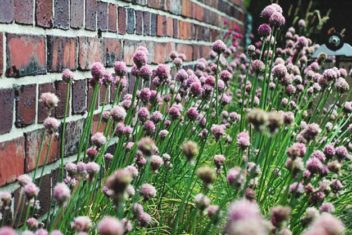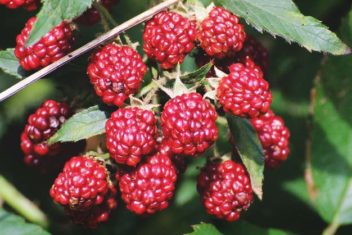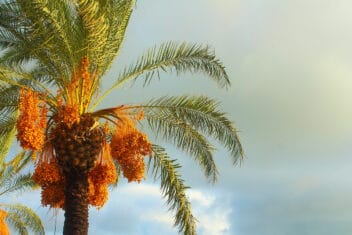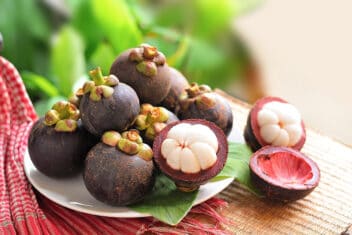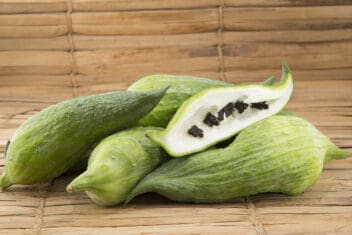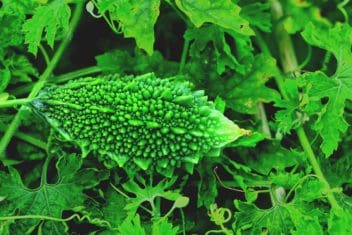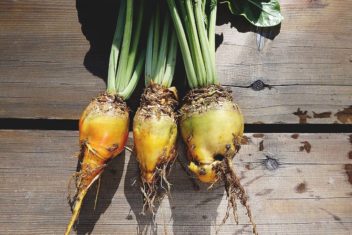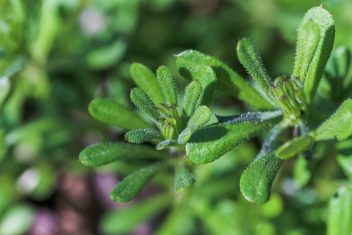I remember the first time I bit into a persimmon. I got adventurous at the grocery store and bought a whole case of them on sale even though I’m not a huge fan of fruit. It was around the holidays, so cheap fruit was scarce.
When I sliced into my first persimmon it became apparent that it was one of the simpler fruits to prep. There aren’t chunky seeds or inedible parts to get in the way. So I took a bite, and what stood out to me was how sweet it was.
In fact, it’s one of the sweetest fruits I can remember tasting. Sweeter than pineapple or mango, with virtually no acidity. I remember telling my husband, whose love of sweets knows no bounds, “this is like candy!” Its name (Diospyros spp.) is Greek for “fruit of the gods,” and that’s fitting given the luscious flavor.
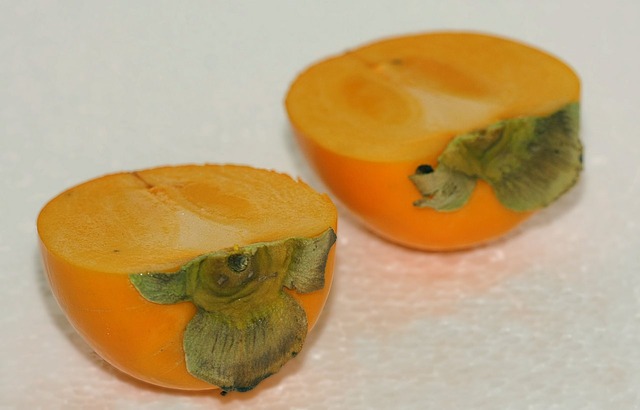
Since then, I knew I needed to be growing persimmons in my backyard. Lucky for me, the pretty plants are much more trouble-free than other fruits.
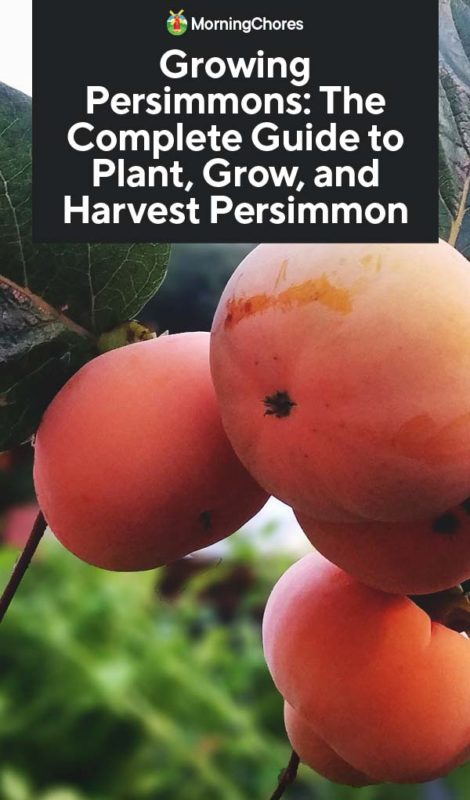
Persimmon Varieties
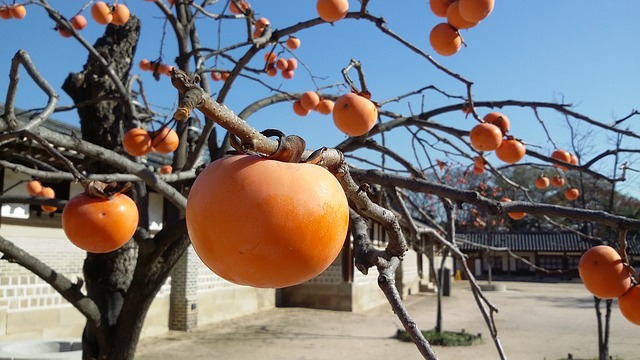
Wondering which variety to plant in your yard? Here are a few smart options.
Japanese Persimmons
Japanese persimmons (Diospyros kaki) are sweeter than American ones, and many trees are self-pollinating (though not all). They grow 25-30 feet tall and thrive in zones 7-10.
- Fuyu – This Japanese persimmon variety looks a lot like a tomato and is the kind most often found at your local supermarket. It’s sweet and has firm, crisp flesh, which makes it great for eating right off the tree.
- Hachiyama – A small-sized persimmon that sweetens only when ripe and soft.
- Jiro – This plant has a drooping, languid appearance that makes it a popular ornamental. You can make tea from the leaves, and the fruit is squarish and sweet.
- Ormond – Know as the Christmas persimmon, this type is ready to harvest in January with juicy, orange-red fruits.
- Saijo – This type is considered the sweetest of all. The tree is a heavy producer, and it’s cold hardy.
- Chocolate: A darker colored, brownish persimmon that doesn’t get its name from its coloring but its subtle cocoa flavoring. Also known as Tsuru Noko.
American Persimmons
American persimmons (Diospyros virginiana) are bitter when unripe. The trees grow larger than Asian varieties, reaching 35-50 feet tall. They’re more cold hardy than Japanese types and grow in zones 4-11.
- Taylor – A cold-hardy variety that can survive even harsh winter conditions, down to -40°F. They have a pronounced sweetness wrapped in a small package.
Yates – This is a self-pollinating type native to Indiana. It resists pests and diseases and has an apricot-like flavor.- Prok – Prok is larger than other American types and it ripens in September until late fall. Self-pollinating.
Planting Persimmon
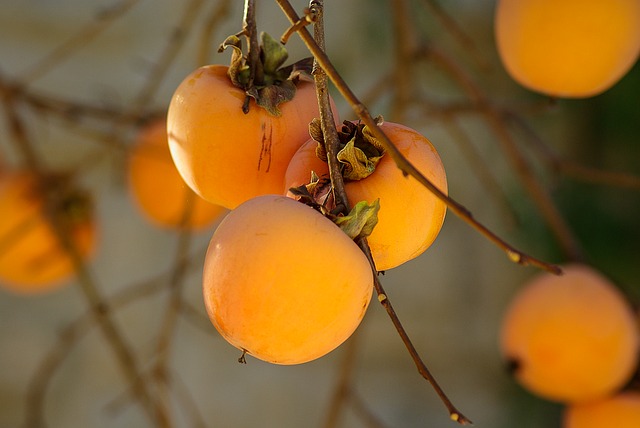
Temperature Requirements
Persimmons do well in southern climates, but there are varieties out there that are bred to handle cold conditions. Depending on the type, they grow in zones 4-11.
Soil and Sun Requirements
Persimmons like loamy, fertile, well-drained soil with a pH between 6.5-7.5. Trees prefer full sun to be productive, but they can also handle part shade. In places with sweltering summers, shade in the afternoon is ideal. Too much darkness, though, and they will get leggy and develop weak branches.
When to Plant
Plant persimmons in the early spring or late winter.
Growing in Containers
Some persimmons do well in pots. In fact, it’s probably a good idea to find a large container if you’re growing persimmons in a northern climate. That way, you can bring the plant in during the winter or when night-time temps drop too low.
Grafts or Seeds?
You can buy persimmons grown from seed or grafts. Grafted trees bear fruit quicker, so when you’re out shopping for a persimmon, that’s something to consider. On the other hand, seed-grown varieties tend to be hardier in the cold.
It’s also possible to start growing persimmons from seed. Begin the process about 5 months before the last frost in your area. Store seeds in moist sand in the refrigerator for 3 months, frequently checking to make sure they’re staying wet. Then, plant seeds 1-inch deep in a peat pot prepped with planting soil. Place near a window or under grow lights and keep between 55-70°F.
Once plants are 4-5 inches tall and have several true leaves, harden them off for 2 weeks before planting in a permanent location.
Plan for Pollination
In some cases, you’ll need two persimmon trees to harvest fruit, though many varieties are self-pollinating. If you’re growing persimmons that require a second tree for pollinating, be sure to plant them at least 20 feet apart.
There’s some wisdom that says gardeners may be able to plant a male and female tree close together and aggressively prune the male tree, so that it’s there to blossom and help with pollination. If you have the room for two trees, I’d suggest spacing the trees out accordingly.
Spacing
Plant trees 20-25 feet apart.
Caring for Persimmons
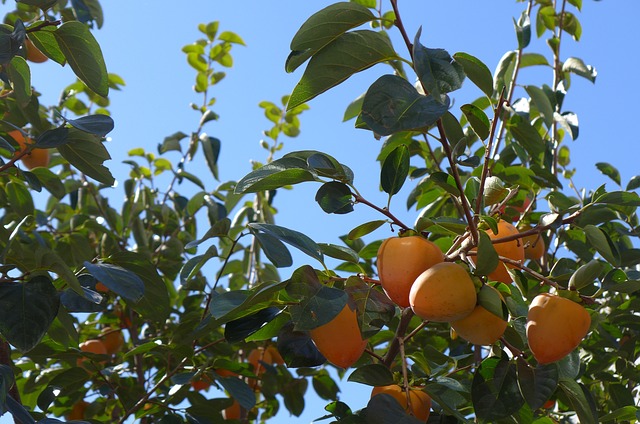
Watering
Persimmon trees don’t mind a bit of drought, but long periods without water will kill them. Avoid waterlogging the soil around your tree, as well, which can also be deadly. Give trees 10 minutes of soaking once a week during warmer months.
Mulching
Mulch around the base of a growing persimmon tree to retain moisture and keep weeds away, but don’t mulch directly around the trunk. Keep a bit of distance to prevent root rot and waterlogging.
Fertilizing
It’s not enough to make visual observations and diagnose nutrient imbalance issues. Get your soil tested! As long as everything looks normal, a balanced fertilizer is the best option for this type of fruit tree.
If you do decide to fertilize, do it in the early spring or late winter. Avoid a high nitrogen fertilizer as this may cause problems with your tree (e.g., fruit or blossom drop). Apply 5-10 pounds of organic fertilizer.
Pruning
Remove any stems or parts of the persimmon tree that appears unhealthy. Prune weak branches to reduce the number of fruits the tree bears. Too much fruit will weigh down branches.
Persimmon Problems and Solutions
Persimmons are relatively problem free, but you might run into a few issues.
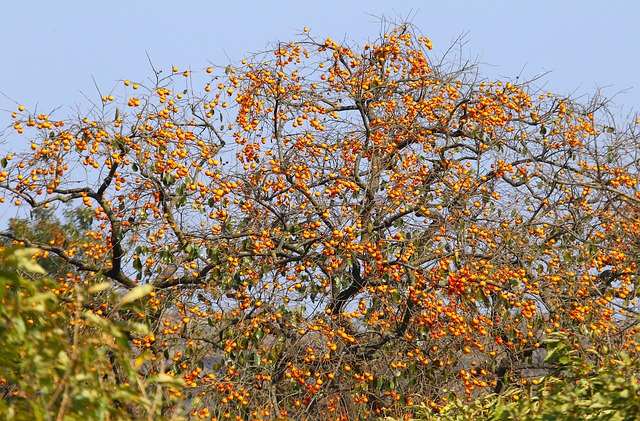
- No fruit: Do you have two female or male trees on your hands? Perhaps you only planted one tree? Remember that some persimmons require 2 or more trees in order for the blossoms to be pollinated and bear fruit. The lack of fruit may also be a temperature issue. If it’s too cold, your tree may have gone dormant for the winter. Too hot and your tree may be too stressed to produce fruit. Otherwise, your tree may be too young to bear fruit. Be patient.
- No blossoms: Blooming time varies depending on the variety of persimmon tree. It may also be too soon to expect flowers. Certain varieties take several years to bear fruit. A nutrient imbalance may also be the cause, but before addressing a potential problem, be sure to test your soil.
- Trees are dying: Time to whip out your trusty checklist, which will apply to most plants in a garden. First, check that the soil is not waterlogged and causing root rot. Next, is your soil providing needed nutrients? If in doubt, get a soil test. Check for pest damage and consider the recent weather happenings.
Anthracnose
Also known as leaf or twig blight, this fungal disease is recognizable by the black spots it creates on leaves. Lower branches on the tree may die, but your tree will probably survive. Pick up any leaf litter, keep the area around your tree weeded and clean tools like pruners before using them. Cut and burn infected branches and water in the morning so leaves have time to dry.
Persimmon Trunk Borer
The persimmon trunk borer is a small insect that, as the name implies, bores into the trunks of trees. Usually, they target the bottom of the tree. You can control this pest naturally if you have the patience to dig out the insects with a sharp tool.
Whitefly
Whiteflies are small, gnat-like insects with white wings that typically target leaves and suck sap from foliage. If you don’t spot the bugs first, you’ll definitely notice that the leaves of your tree are turning yellow. Use whitefly traps to control them.
Thrips
Another winged insect that feeds on many types of plants, thrips are also controlled via traps.
Persimmon and Verticillium Wilt
This is a fungus that can be fatal to persimmon trees in just a few years. Branches will die off, and leaves will wilt and fall, starting at the top of the tree and moving down. Unfortunately, you’ll need to dig up and destroy impacted trees and solarize the soil.
Nematodes
Nematodes cause galls on roots that prevent the tree from getting water. They generally won’t kill a tree, but if you struggle with this pest, consider planting resistant varieties.
Armillaria Root Rot
This fungus starts at the base of the tree and slowly grows up the trunk. It can stunt tree growth. Remove any fungus that you see growing and sterilize your tools before using. Keep plants appropriately watered to keep root rot at bay.
Companions for Persimmons
The best companion for most persimmon tree varieties is another persimmon tree! You’ll need a male and female tree to encourage pollination. Want to grow something else nearby? Here are a few other beneficial companions for your exotic fruit tree:
- Flowering herbs like mint, chives, borage, and comfrey.
- Flowering plants that might attract pollinators, like marigold, or calendula.
- Strawberries
Worst Companions
Avoid anything that will compete for space and nutrients with your persimmon tree. Walnut trees are particularly bad companions for persimmons.
Harvesting and Storing Persimmon
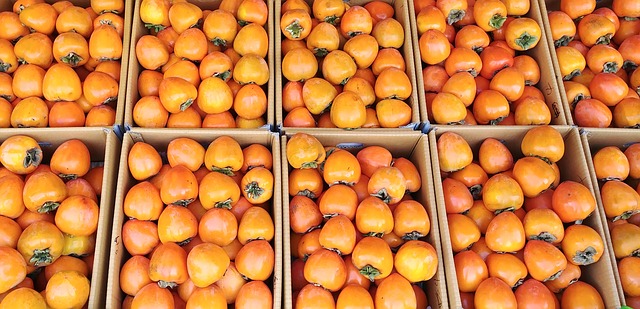
Harvest time for persimmons depend on the variety you’ve planted and climate you’re living in. They’re generally ready 2-3 years after planting. American-type persimmons taste best once the flesh is soft.
Some Japanese persimmons can also be best eaten when soft, so you’ll need to check care info for the specific variety you’ve planted to verify whether your persimmon tree’s fruits are tasty when the flesh is still crisp.
With hard-fleshed, non-astringent varieties, the fruit typically changes slightly in appearance when ready for harvest. It may even fall from the tree, but fruits are easily damaged, and the sweet tasting persimmons are easy targets for hungry ground mammals.
Leave the short pedicel in place when picking persimmons.
Once picked, persimmons will stay fresh for a few weeks in the fridge or a few days left out. Varieties that are best eaten soft can be left to ripen after picking. Some varieties may spoil quicker than others.
Even if you don’t love the fruits, the trees are beautiful in the garden thanks to the dark green leaves and pungent flowers. Although they’re amazing fresh off the tree, persimmons make for cookies that are out of this world. How do you like to prepare yours?

